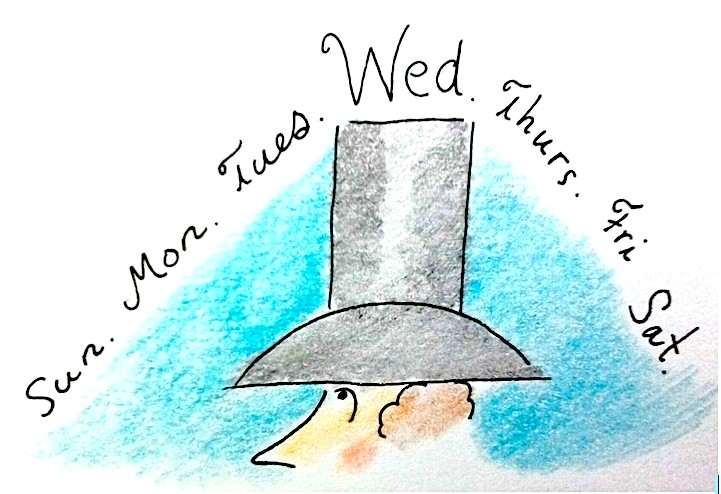A Studio Visit
It’s taken way too long to get up to Vermont to visit Edward Koren in his studio. Yesterday my New Yorker colleague (and wife), Liza Donnelly and I took a drive to mid-Vermont to do just that. On the way north I thought about some of my colleague’s studios I’ve visited over the years: Jack Ziegler’s, Mick Steven’s, Edward Sorel’s, Michael Crawford’s, Peter Steiner’s, and Liza Donnelly’s (of course). Each told (tells) a different story of the artist.
Walking into Koren’s studio I felt immediately at home — I could relate to the feel, the abundance of a lifetime’s collection of this’s and that’s: finished art; stacks of sketchbooks; sketches here, there, and everywhere; ideas pinned on walls; friend’s art; art by artist heroes; photographs — all those things that accompany us, comfort us, and inspire us as we work. And of course, there is also the invisible, the unseen: the as yet netted ideas floating around waiting for Koren to catch them and put down on paper. It’s a space and place that continues to fill as Koren approaches his 87th year (in December).
 Above: a screenshot from a terrific video “The Editorial Artist” from Columbia University.
Above: a screenshot from a terrific video “The Editorial Artist” from Columbia University.
I never know whether to snoop around someone else’s studio — I tentatively ambled around the room, and apologized for exploring — but Koren encouraged my looking. And so I snooped. I looked over the titles of his many books cramming his bookshelves (the first book I spotted — it was slightly pulled out from its nearest neighbors — was a copy of James Thurber’s My Life And Hard Times; Thurber was an early influence on Koren). I asked about an in-progress sketch on a drawing board, and then about a sketch that drifted out from behind a piece that I slightly moved when examining it. He pointed out Charles Addams’s drawing board that he inherited from Frank Modell. We looked at prints Koren had made (he’s a printmaker as well as a cartoonist). Koren asked me to open some of his flat file drawers — Liza, he and l looked at the paper he uses…and as each drawer revealed a stack, he named the papers (Rives, Arches, etc,) as if naming family members — these were papers he knows so well — papers with which he has what he calls “a relationship.”
I couldn’t help but stand at one end of the room and just take it all in for a moment — the entirety of Koren’s world, with Koren himself at the helm, sitting by one of his many drawing boards. How often does one get to experience a cartoon god at home, in the place where it’s all happened for most of his sixty years at The New Yorker, and where it continues to happen.


What an excellent video – what an excellent cartoonist – He deserves all the accolades we can muster up to give him.